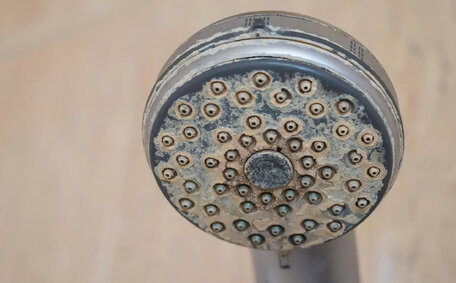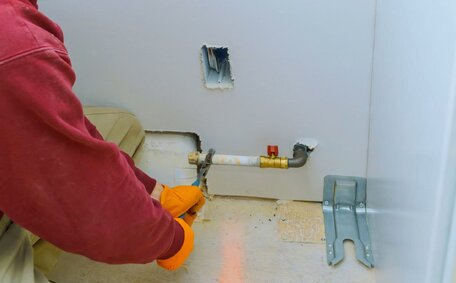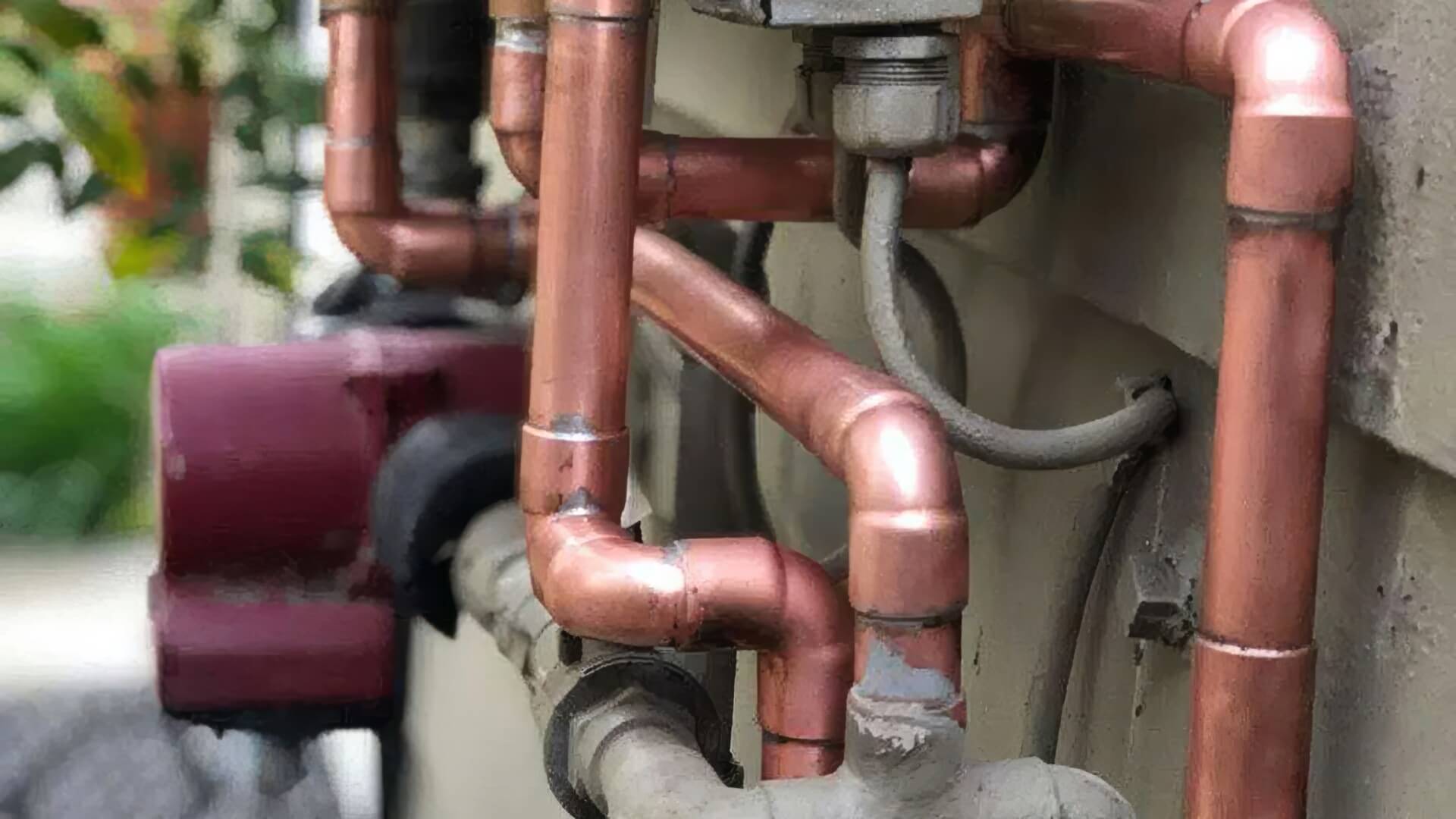Introduction to Locating and Operating the Main Water Shutoff Valve
Knowing how to promptly locate and operate your main water shutoff valve is crucial for homeowners. Being able to shut off your home’s water supply during a burst pipe, major leak, or any plumbing emergency can prevent extensive water damage and flooding.
The main shutoff valve is often found where the water supply enters your home, usually in a basement, crawl space, garage, or near the front exterior.
Your home’s water shutoff may be a gate valve, ball valve, or a different type.
Upon moving into a new home, it’s essential to find, evaluate, and clearly mark your stop tap. Ensure that everyone in your household knows the locations of shutoff valves and how to turn the water supply off in emergencies. Regularly maintaining your inside stop valve guarantees its functionality in emergencies.
Locating your main shut-off valve quickly, especially under a cover plate during an emergency, can reduce repair costs and stress—this guide will walk you through the process.
Identifying the Location of the Main Water Shutoff Valve
In Drummoyne, the main water shutoff for residences or businesses is typically situated:
- Near the front exterior wall
- In the garage or carport
- Inside a box attached to the side of the house
- Underneath the home in the crawl space
If the stop tap isn’t immediately visible, you may find the water shutoff valve by lifting the meter box lid.
In units or apartments, the crucial inside stop valve for your local water is usually located near the water heater:
- Near the hot water system
- Inside a box also known and labelled as the "stop tap" in the unit
- In the stairwell or hallway of the complex
Your shutoff valve may be a gate or ball valve, where a quarter turn will stop the water supply to your property.
How to Access the Main Water Shutoff Valve
Accessing and knowing how to turn off the main water is critical in emergencies. Here are some tips:
- Clear any items impeding the route to switching off main water supply valve, such as boxes, furniture or debris.
- Keep a flashlight handy to manoeuvre through dimly-lit areas such as basements to shut off the valve.
- Keep a spare key available if the shutoff valve is behind a locked gate or door.
- Make sure any covers on your system’s valve can be easily opened for when you need to turn your water off. A screwdriver may help pry access panels off.
- Carry out annual checks to ensure the path to the shutoff valve remains clear. Any overgrown vegetation should be pruned.
- If dwelling in a unit, contact your building management to request a labelled map showcasing the main shut off location.
Ensuring quick and convenient access to the main shutoff valve helps minimise delays in addressing burst pipes or other issues that can disrupt your water supply. This helps minimise the risk of excess water, flooding and costly damage when you have your water supplied off.
Step-by-Step Instructions for Turning Off the Main Water Supply
Follow these simple instructions to safely turn off your main water supply:
- Find the main shutoff valve, typically near the front exterior wall, garage, in a side-mounted box, or under the house in the crawl space, and turn it.
- Remove any barriers that might hinder you when you need turn the valve in haste.
- Open up any gates, doors, or access panels necessary to reach the valve located on the floor your water system depends upon.
- Use a flashlight if the valve is located in a dark area like a basement or crawl space.
- Ascertain the specific type of valve your setup uses. Common varieties include gate and ball valves.
- Turn the valve clockwise firmly until it stops to cut off the water supply to your property.
- Ensure success by testing the kitchen sink tap; if no water flows when turned on, the valve is correctly shut off.
- Keep the valve off until repairs are completed, then gradually turn it counterclockwise to re-establish your water supply.
Following these instructions aids in quickly shutting off the main water in emergencies, reducing the risk of flooding and water damage.
Turning Off Water to Specific Fixtures
At times, rather than shutting off the main water supply for your whole home, you may only need to turn off the water to particular fixtures for repair or maintenance work.
- Many sinks have separate shutoff valves located under the sink or behind counters; familiarise yourself with these for localised water supply management. Turn these clockwise to stop water flow.
- Toilets have built-in shutoff valves behind the bowl or along the wall. Turn clockwise to shut off.
- Make sure each outdoor hose bib has a corresponding isolation valve within your dwelling. Turn this off before working on outdoor taps.
Using these individual fixture water shut off valves prevents you from having to turn off all household water unnecessarily. Make sure to locate and test them periodically to ensure they function when needed.
When You Should Turn Off Your Water Supply
There are several scenarios where turning off your main water supply is necessary:
- Conducting significant plumbing repairs or pipe maintenance that requires halting the water flow
- Replacing or servicing plumbing gas hot water heaters where severing the connections to the system is necessary
- Going on vacation and wanting to minimise risks of leaks while away
- A burst pipe, major leak or other plumbing emergency can cause significant damage, making prevention essential
Turning off your water before repairs ensures the safety of yourself and any tradespeople. It also prevents wasted water and flooding if leaks occur.
During vacations, shutting off the main valve provides peace of mind against potential leaks and turning off water your property secures it further. Just be sure to turn water back on slowly when returning to prevent surges.
So learning how to quickly access and turn off your main water valve is key preparation for various planned works and urgent troubleshooting situations alike.
What to Do Before Turning the Water Back On
Before turning your water supply back on after repairs or maintenance, follow these important steps:
- Verify all repairs or maintenance work has been fully carried out
- Do a visual check for any leaks or pooling water
- Remove any tools or materials from the area
- Double check faucets and valves are off
- Make sure access to shutoff valve remains clear
- Slowly turn main water valve on counter-clockwise
- Review your water pipe network for several hours for the emergence of small leaks
- Flush pipes until water runs clear
Carefully inspecting and double-checking your plumbing system before reactivating it prevents leaks, costly damage and unnecessary waste of water.
How to Turn the Water Supply Back On
Once any leaks have been repaired and it’s safe to restore water flow, follow these steps to turn your main water supply back on:
- Verify all repairs or maintenance work has been completed.
- Do a final visual check for leaks and pooling water.
- Make sure the path to the main valve remains clear of obstructions.
- Bring a flashlight if the valve is located in a dark space.
- Employ careful movements when turning the valve, akin to how a skilled plumber can steadily reinitiate water flow.
- Take few steps, beginning with a slight turn of the valve and waiting a few minutes, to monitor for leaks as water pressure builds.
- Once all checks are clear, open the main valve fully counterclockwise.
- Inspect pipes and fixtures throughout the home over next several hours for any new small leaks.
- Finally, Flush pipes with cold water until it runs clear.
Carefully restoring your water flow prevents leaks, flooding, and enables you to supervise how shut off controlled your system after repairs or overhauls.
Maintaining and Troubleshooting Your Main Water Shutoff Valve
Regular checks and use of the main shutoff valve are imperative to prevent malfunctions that could compromise your property’s water system in critical situations. Follow this advice:
- Test the valve every 6 months by turning it off and on. Ensure it fully stops water flow and can turn smoothly.
- Spray the valve with penetrating oil annually to prevent seizure from corrosion.
- Clear any dirt, debris or mineral deposits from the valve surface over time.
- If the valve becomes stiff and arduous to turn, contact your water supplier or use a wrench to gently loosen the nut and operate the valve. Lubricate once freed up.
- Replace the valve if it cannot seal off water flow completely when closed.
Taking steps to maintain your main water shutoff valve allows it to work efficiently whenever you need to stop water flowing into your home urgently, preventing leaks and flooding.
When to Call a Professional Plumber
There are situations when it’s wise to call a professional Drummoyne plumber for assistance:
- You’ve located the main water shutoff valve but find it impossible to turn, even with a wrench
- After turning the water off with the valve, your residence might still have unidentified leaks or flowing water
- There is a major burst pipe or leak causing extensive water damage
- You lack the expertise to safely isolate parts of the plumbing system
- Doing renovations and need to reroute pipework
- Replacing water heaters, toilets or other complex fixtures
Our skillful team stands by; reach out and call us to swiftly handle water system dilemmas or emergency valve operation. Contact us 24/7 on 1300 349 338 or jobs@drummoyneplumbingservices.com.au
Preventing Water Damage
There are several preventative measures homeowners can take to help avoid extensive water damage:
- Regularly inspect walls and ceilings for any indications of moisture or leaks.
- Immediately investigate any musty smells which may indicate an early unseen water leak.
- Update worn washers, seals and pipe fittings during routine plumbing maintenance to prevent leaks.
- Ensure drainage pipes are free-flowing and not blocked to prevent water overflow.
- Have plumbers routinely inspect tankless water heaters, toilets and other fixtures for wear and proper function.
- Install leak detection systems that can automatically activate valves to shut off the water flow.
- Install overflow pans beneath water heaters, washing machines, and similar appliances to catch leaks.
- Know how to quickly locate and shutoff the main water valve during plumbing emergencies.
Proactive steps to identify your main water shutoff valve enable early intervention against leaks and failures, preventing severe bursts and flooding. Combined with properly maintaining fixtures and understanding emergency shutoffs, homeowners can significantly mitigate risks of major water damage incidents.






